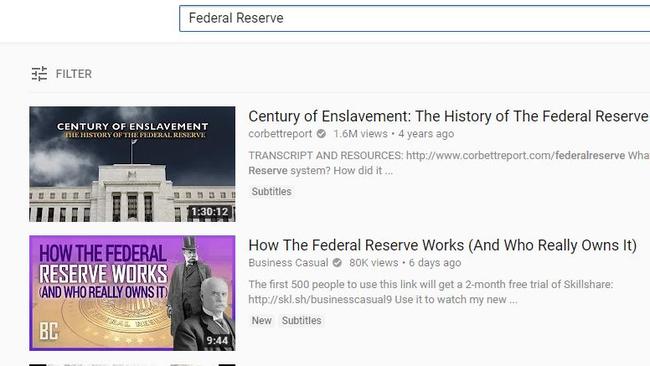YouTube‘s ‘rotten’ algorithms a reminder of insidious side of tech-driven engagement
WHILE YouTube’s parent company Google makes a show of wanting to improve the quality of users’ time online, this example tells a very different story.

AS CONSUMERS become more aware of the tricks used by big tech companies to keep us clicking, scrolling, watching and engaging on their device or platform, Silicon Valley companies like Google and Facebook have had to change tack.
There is a new trend towards a focus on time well spent, at least ostensibly. These companies proclaim they are putting more emphasis on users’ well being, and to some extent they are.
Google’s latest show of this is in a newly released academic paper titled The joy of missing out and the freedom of disconnecting.
It looked at how smartphones are changing people’s behaviour and downtime for the worse.
It pretty much states the obvious and in an accompanying blog post, talked about efforts to allow users to mitigate the negative effects of screen addiction.
“We knew there was more that we could do to understand how phones might be making it harder for people to disconnect, and the frustration this was generating,” the researchers wrote.
“Surprisingly, we found few differences across cultures, countries, gender, age groups or types of devices people were using. Across the board, mobile devices loaded with social media, email and news apps, were creating a constant sense of obligation, generating unintended personal stress.”
Earlier this year, Google announced a suite of tools to help people achieve balance in their digital lives, citing that 70 per cent of users wanted help with regulating their digital wellbeing.
But it’s a token effort and many parts of the companies business reveal the insidious ways Google tries indecently keep our eyes locked on the screen. Simply put, the algorithms tell a different story.
Perhaps the best example is Google’s YouTube. If you spend any time on the site, the autoplay function that automatically serves up “related” videos will often send you down a rabbit hole of conspiracy theories and sensationalist fake news because the algorithm knows you are more likely to watch such dramatic content.
Predatory creators know this and can use it to their advantage. It’s the same reason innocent childrens’ video can be replaced by Elsagate content that looks innocuous but involves popular kids characters in depraved and sinister actions.
The latest reminder of how destructive this system can be was illustrated by US journalist Chris Hayes this morning.
“My favourite example of how informationally toxic YouTube’s algorithm is this: Imagine you’re high school freshman and got a school assignment about the Federal Reserve,” he wrote on Twitter.
“You watch videos on YouTube all the time, so you go home and put ‘Federal Reserve’ into YouTube’s search bar.”

When you do this, the top search result is a 90 minute video titled Century of Enslavement: The History of The Federal Reserve. It has 1.6 million views but it’s not exactly a bastion of reliable information and is described by Mr Hayes as “conspiratorial quackery”.
And it leads you down a path that quickly arrives at a video about Donald Trump “revealing” who created the Illuminati.
It is, perhaps not surprisingly, conspiratorial quackery.
— Chris Hayes (@chrislhayes) September 6, 2018
Once you view that, the algorithm also then suggests this on the sidebar:
"What You're Not Supposed to Know About America's Founding" (863,00 views)https://t.co/anOLNuPJGF
It's a John Birch Society lecture delivered by someone who says he "infiltrated Marxist organizations as a young man" and that Marxists infiltrate the media.
— Chris Hayes (@chrislhayes) September 6, 2018
Once you've viewed that, you can then click on this video, conveniently furnished by the algorithm:
— Chris Hayes (@chrislhayes) September 6, 2018
Trump Tells Everyone Exactly Who Created Illuminati (4 million views)https://t.co/2ipMBtaphA
And on and on and on.
— Chris Hayes (@chrislhayes) September 6, 2018
All this starts with someone genuinely searching for basic information about the Federal Reserve!
And this is where you can end up in two or three clicks.
And it's making money for YouTube all along the way.
Something's deeply rotten here.
Zeynep Tufekci, a technologist and associate professor at the University of North Carolina, who regularly dispels the benevolent aura of the tech giants, called it: “Another depressing, alarming example about the harms YouTube’s recommender algorithm”.
If Google really cared about quality time spent on its services, these insiders suggest, it would do more to fix these troublesome parts of its business model.




